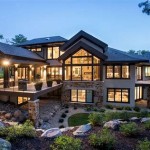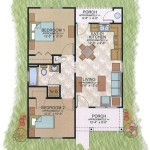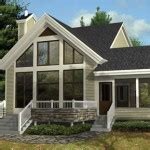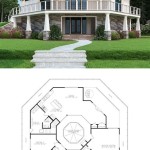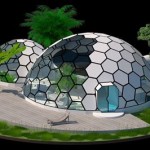Beachside house plans are architectural blueprints specifically designed for constructing homes near the oceanfront. These plans account for the unique environmental factors associated with coastal areas, such as saltwater corrosion, high winds, and sand movement.
Unlike traditional house plans, beachside designs incorporate features that enhance the coastal living experience. For example, they often include outdoor living spaces, such as covered porches and decks, to maximize views of the ocean and capture refreshing ocean breezes. Additionally, they may feature reinforced structures to withstand strong winds and moisture-resistant materials to prevent damage from salt spray and humidity.
As we delve into the intricacies of beachside house plans, we will explore the key elements that make these designs both functional and aesthetically pleasing in the coastal environment.
When planning a beachside house, consider these crucial elements:
- Elevated design
- Flood-resistant materials
- Wind-resistant structure
- Coastal-friendly landscaping
- Outdoor living spaces
- Saltwater-resistant fixtures
- Energy efficiency
- Natural lighting
- Water conservation
- Hurricane preparedness
Incorporating these aspects into your beachside house plan will ensure a resilient, comfortable, and sustainable home by the sea.
Elevated design
Elevated design is a crucial aspect of beachside house plans to mitigate the risks associated with coastal flooding and storm surges. By elevating the living spaces above the expected flood level, homeowners can protect their property and ensure the safety of their families.
Building codes in coastal areas often specify minimum elevation requirements for new construction. These requirements vary depending on the location and the level of risk. It is essential to adhere to these regulations to comply with building codes and obtain insurance coverage.
Elevating a beachside house can be achieved through various methods, such as constructing the house on a raised foundation, using stilts or pilings, or creating a crawlspace or basement below the living areas. The choice of method depends on factors such as the topography of the site, the soil conditions, and the desired architectural style.
In addition to protecting against flooding, elevated design offers several other benefits. It can improve views of the ocean and surrounding landscape, enhance natural ventilation, and reduce the risk of moisture and mold issues. By elevating the house, homeowners can create a more comfortable and enjoyable living environment while safeguarding their investment.
Flood-resistant materials
In coastal areas, where flooding is a potential hazard, selecting flood-resistant materials for your beachside house is crucial. These materials can minimize damage to your property and ensure the safety of your family in the event of a flood.
- Pressure-treated lumber
Pressure-treated lumber is treated with chemicals to resist rot and decay, making it an excellent choice for structural components that may come into contact with moisture or floodwaters. It is commonly used for framing, decking, and siding.
- Fiber cement siding
Fiber cement siding is a durable and moisture-resistant material composed of cement, sand, and cellulose fibers. It is resistant to rot, insects, and fire, making it a suitable option for exterior cladding in coastal environments.
- Vinyl siding
Vinyl siding is a popular choice for beachside homes due to its durability, low maintenance, and resistance to moisture and salt spray. It is available in a wide range of colors and styles, allowing you to customize the appearance of your home.
- Stainless steel hardware
Stainless steel hardware, such as nails, screws, and bolts, is corrosion-resistant and can withstand exposure to saltwater and moisture. It is essential for securing structural components and exterior fixtures in coastal homes.
By incorporating flood-resistant materials into your beachside house plan, you can significantly reduce the risk of damage caused by flooding and protect your investment for years to come.
Wind-resistant structure
In coastal areas, where hurricanes and strong winds are common, designing a wind-resistant structure is paramount for the safety and longevity of your beachside home.
To achieve a wind-resistant structure, several key elements must be considered:
- Reinforced foundation
The foundation of your beachside home is the cornerstone of its structural integrity. It must be strong enough to withstand the uplift forces exerted by high winds. This can be achieved through the use of reinforced concrete footings, deep pilings, or a combination of both.
- Sturdy framing
The framing of your home, including the walls, roof, and floors, must be constructed using strong and durable materials. High-quality lumber, such as pressure-treated wood or engineered wood products, should be used to resist wind loads.
- Hurricane straps and connectors
Hurricane straps and connectors are metal devices that are installed to connect the framing components of your home together. These straps and connectors help to transfer wind loads throughout the structure, preventing individual components from being torn apart.
- Impact-resistant windows and doors
Windows and doors are particularly vulnerable to wind damage. Installing impact-resistant windows and doors, which are designed to withstand high winds and flying debris, is essential for protecting your home and its occupants.
By incorporating these elements into the design of your beachside home, you can significantly enhance its resistance to wind and ensure the safety of your family and property during storms.
Coastal-friendly landscaping
Coastal-friendly landscaping is an essential aspect of beachside house plans as it helps to protect the environment, minimize maintenance, and enhance the overall aesthetic appeal of your property.
Here are some key points to consider when designing a coastal-friendly landscape:
- Choose native plants
Native plants are well-adapted to the coastal environment and require less water, fertilizer, and maintenance. They also provide important habitat for local wildlife.
- Use drought-tolerant plants
Drought-tolerant plants can survive with minimal watering, making them ideal for coastal areas where water conservation is important.
- Plant windbreaks
Planting windbreaks, such as hedges or rows of trees, can help to reduce wind speed and protect your property from wind damage.
- Use permeable surfaces
Permeable surfaces, such as gravel or pavers, allow water to infiltrate the ground rather than running off into storm drains. This helps to reduce erosion and improve water quality.
By incorporating these principles into your coastal-friendly landscaping, you can create a beautiful and sustainable outdoor space that complements your beachside home and protects the surrounding environment.
Outdoor living spaces
Outdoor living spaces are an integral part of beachside house plans, allowing homeowners to enjoy the coastal environment and extend their living areas beyond the confines of the house.
Decks and patios
Decks and patios provide outdoor seating and dining areas, perfect for relaxing and entertaining while enjoying the ocean views. Decks are typically elevated off the ground, while patios are usually at ground level. Both decks and patios can be constructed from a variety of materials, such as wood, composite decking, or pavers.
Screened porches
Screened porches offer protection from insects and other pests while still allowing for fresh air and views of the outdoors. They are a great option for creating a comfortable and inviting outdoor space.
Sunrooms
Sunrooms are enclosed, glass-walled structures that provide a sheltered and sun-filled space. They can be used for a variety of purposes, such as reading, relaxing, or enjoying the views.
Outdoor kitchens
Outdoor kitchens are a popular addition to beachside homes, allowing homeowners to cook and entertain outdoors. They can be equipped with grills, ovens, refrigerators, and other appliances.
When designing outdoor living spaces for a beachside home, it is important to consider factors such as sun exposure, wind, and moisture. Choosing durable materials and incorporating features such as shade structures and outdoor lighting can help to create a comfortable and enjoyable outdoor space that can be enjoyed year-round.
Saltwater-resistant fixtures
In coastal environments, exposure to saltwater and moisture can wreak havoc on fixtures and finishes. Choosing saltwater-resistant fixtures is crucial to ensure the longevity and functionality of your beachside home.
Exterior fixtures
Exterior fixtures, such as doorknobs, hinges, and lighting fixtures, should be made of materials that can withstand corrosion and rust. Stainless steel, aluminum, and brass are all good options for saltwater-resistant exterior fixtures.
Interior fixtures
Interior fixtures, such as faucets, showerheads, and cabinet hardware, should also be made of saltwater-resistant materials. Brushed nickel, chrome, and PVD-coated finishes are all good choices for interior fixtures in coastal homes.
Appliances
Appliances, such as refrigerators, dishwashers, and ovens, should be protected from saltwater damage. Look for appliances with sealed exteriors and corrosion-resistant components.
Furniture
Furniture for beachside homes should be made of materials that can withstand moisture and UV exposure. Teak, aluminum, and wicker are all good choices for outdoor furniture in coastal environments.
By choosing saltwater-resistant fixtures and finishes, you can protect your beachside home from the damaging effects of saltwater and moisture, ensuring its beauty and functionality for years to come.
Energy efficiency
Incorporating energy-efficient features into your beachside house plan can significantly reduce your energy consumption and utility bills while also contributing to a more sustainable lifestyle.
Energy-efficient appliances
When selecting appliances for your beachside home, look for ENERGY STAR-rated appliances. These appliances meet strict energy efficiency standards set by the U.S. Environmental Protection Agency (EPA) and the U.S. Department of Energy (DOE). ENERGY STAR-rated appliances can save you money on your energy bills and help to reduce your carbon footprint.
LED lighting
LED (light-emitting diode) lighting is a highly energy-efficient lighting technology that uses up to 90% less energy than traditional incandescent bulbs. LED bulbs also last much longer than incandescent bulbs, so you can save money on replacement costs as well.
Solar panels
Solar panels can be installed on your roof to generate electricity from the sun. This can significantly reduce your reliance on the grid and save you money on your energy bills. Solar panels are a particularly good investment for beachside homes, as they can take advantage of the abundant sunshine in coastal areas.
Insulation
Proper insulation is essential for maintaining a comfortable indoor temperature in your beachside home while reducing energy consumption. Insulation helps to keep the heat in during the winter and the heat out during the summer. Be sure to insulate your walls, roof, and floors to maximize energy efficiency.
By incorporating these energy-efficient features into your beachside house plan, you can create a more sustainable and cost-effective home that is comfortable to live in year-round.
Natural lighting
Natural lighting plays a crucial role in the design of beachside house plans. By maximizing the use of natural light, homeowners can create a brighter, more comfortable, and energy-efficient living space.
- Large windows and glass doors
Large windows and glass doors allow ample natural light to enter the home, creating a bright and airy atmosphere. They also provide stunning views of the ocean and surrounding landscape, bringing the outdoors in.
- Skylights and solar tubes
Skylights and solar tubes are installed on the roof to bring natural light into interior spaces that may not have access to windows. This is particularly useful for rooms such as hallways, bathrooms, and closets.
- Light-colored walls and ceilings
Light-colored walls and ceilings reflect natural light, making rooms feel brighter and more spacious. Dark colors, on the other hand, absorb light, making rooms feel smaller and darker.
- Open floor plans
Open floor plans allow natural light to flow more easily throughout the home. By eliminating walls and barriers, homeowners can create a more connected and brighter living space.
Incorporating these elements into your beachside house plan can maximize natural lighting, reduce your reliance on artificial lighting, and create a more comfortable and inviting home.
Water conservation
Water conservation is an important consideration for beachside house plans, as coastal areas often face water scarcity and drought conditions. By incorporating water-saving features into your home’s design, you can reduce your water consumption and help to protect the environment.
- Low-flow fixtures
Low-flow fixtures, such as faucets, showerheads, and toilets, use less water than standard fixtures without sacrificing performance. By installing low-flow fixtures throughout your home, you can significantly reduce your water usage.
- Water-efficient appliances
Water-efficient appliances, such as washing machines and dishwashers, use less water to complete their cycles. Look for appliances with the WaterSense label, which indicates that they meet strict water efficiency standards set by the EPA.
- Rainwater harvesting system
A rainwater harvesting system collects and stores rainwater from your roof for later use. This water can be used for irrigation, washing your car, or other non-potable purposes. Rainwater harvesting systems can help to reduce your reliance on municipal water sources.
- Drought-tolerant landscaping
Drought-tolerant plants require less water to survive, making them an excellent choice for beachside landscapes. By planting drought-tolerant plants, you can reduce your outdoor water usage and help to conserve water.
By incorporating these water conservation features into your beachside house plan, you can create a more sustainable and environmentally friendly home that uses water wisely.
Hurricane preparedness
Hurricanes are a major concern for beachside homeowners, and it is essential to incorporate hurricane preparedness features into your house plan. These features can help to protect your home and family from the devastating effects of a hurricane.
Reinforced structure
The structure of your beachside home should be designed to withstand hurricane-force winds. This includes using reinforced concrete or steel framing, hurricane straps and connectors, and impact-resistant windows and doors. A well-reinforced structure will be less likely to suffer damage or collapse in the event of a hurricane.
Elevated design
Elevating your beachside home above the ground level can help to protect it from flooding and storm surges. The higher your home is elevated, the less likely it is to be damaged by floodwaters. Building codes in coastal areas often specify minimum elevation requirements for new construction. It is important to adhere to these regulations to ensure the safety of your home and family.
Storm shutters
Storm shutters are an essential hurricane preparedness feature for beachside homes. Storm shutters protect windows and doors from wind and flying debris, which can cause significant damage to your home. Storm shutters can be made from a variety of materials, such as aluminum, steel, or plywood. It is important to choose storm shutters that are rated to withstand the wind speeds expected in your area.
Emergency generator
An emergency generator can provide backup power to your home in the event of a hurricane. This can be essential for operating appliances, lights, and other essential equipment. Emergency generators can be powered by gasoline, diesel, or natural gas. It is important to choose a generator that is large enough to power your essential appliances and equipment.
By incorporating these hurricane preparedness features into your beachside house plan, you can significantly reduce the risk of damage to your home and family in the event of a hurricane.










Related Posts


